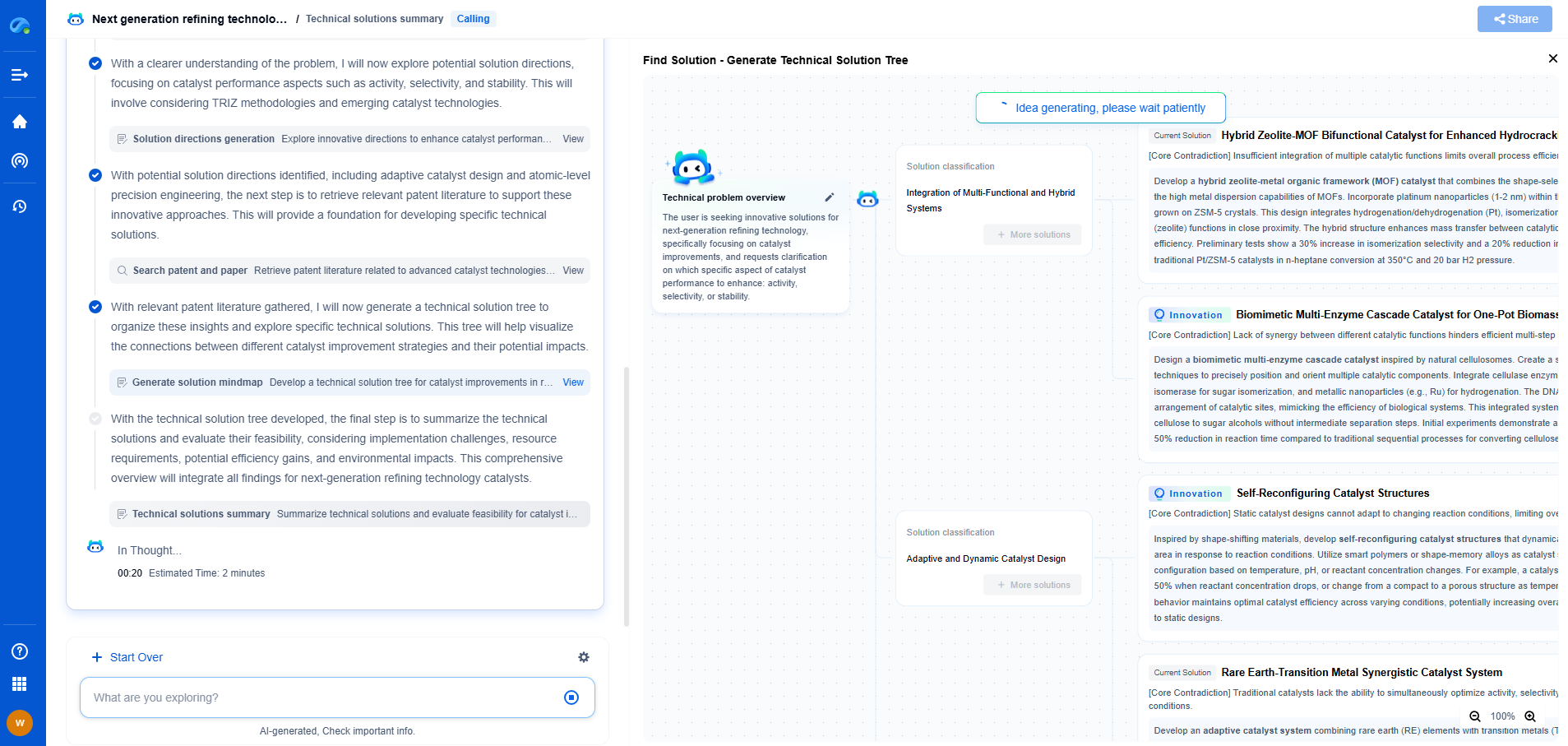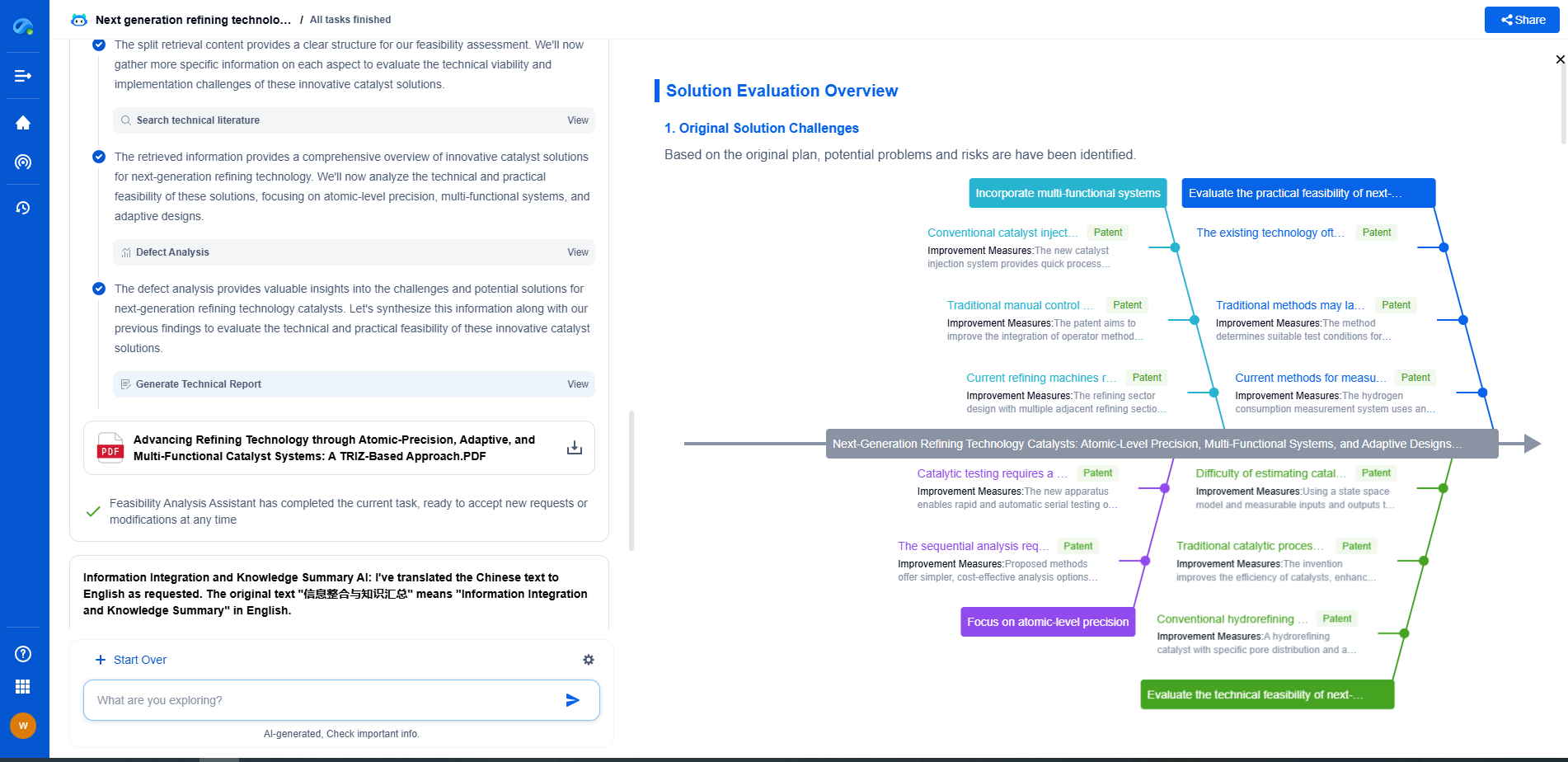RF Circuits in 5G & Wi-Fi 6: Key Challenges & Solutions
JUN 27, 2025 |
The advent of 5G and Wi-Fi 6 has ushered in a new era of wireless communication, promising faster speeds, lower latency, and more reliable connections. At the heart of these technologies are RF (Radio Frequency) circuits that play a crucial role in transmitting and receiving signals. However, the design and implementation of RF circuits for 5G and Wi-Fi 6 come with their unique set of challenges and require innovative solutions to ensure optimal performance.
Complexity of High-Frequency Designs
One of the primary challenges in RF circuits for 5G and Wi-Fi 6 is managing the higher frequencies these technologies employ. 5G networks operate in the millimeter-wave spectrum, which can reach up to 100 GHz, while Wi-Fi 6 uses frequencies in the 6 GHz band. Designing circuits that can efficiently handle these high frequencies requires precise control over parameters such as gain, noise figure, and linearity. Components must be meticulously chosen and designed to minimize losses and ensure signal integrity.
Solution: Advanced Simulation Tools
To address the complexity of high-frequency designs, engineers are turning to advanced simulation tools. These tools allow for the modeling and analysis of RF circuits in the virtual domain, enabling designers to predict performance and identify potential issues before physical prototypes are built. By simulating the behavior of circuits at these frequencies, designers can make informed decisions about component selection and circuit layout, reducing trial-and-error in the lab.
Miniaturization and Integration
Another significant challenge is the trend towards miniaturization and integration. As devices become smaller and more powerful, there is a demand for RF circuits that can fit into compact spaces without sacrificing performance. This requires integrating multiple functionalities into a single chip, known as system-on-chip (SoC) solutions, which poses its own set of challenges in terms of heat dissipation, power consumption, and electromagnetic interference (EMI).
Solution: Innovative Packaging Techniques
To tackle the challenges of miniaturization and integration, innovative packaging techniques are being developed. Techniques such as multi-chip modules (MCM) and 3D packaging allow multiple RF components to be stacked or placed closely together, reducing the overall footprint. Additionally, the use of materials with better thermal conductivity and advanced thermal management strategies help in mitigating heat-related issues.
Efficiency and Power Consumption
Efficiency and power consumption are critical concerns in RF circuit design, especially for mobile devices operating on 5G and Wi-Fi 6 networks. RF circuits must provide high output power while maintaining efficiency to prolong battery life and ensure sustainable operation. This requires balancing power amplifier design, impedance matching, and minimizing signal losses.
Solution: Power-Efficient Architectures
To enhance efficiency, power-efficient architectures such as envelope tracking and digital predistortion are being adopted. Envelope tracking dynamically adjusts the supply voltage to the power amplifiers to match the signal envelope, improving efficiency. Digital predistortion compensates for non-linearities in power amplifiers, enhancing performance and reducing power wastage.
Interference and Coexistence
With the proliferation of wireless devices, interference and coexistence have become significant challenges. RF circuits must be designed to operate in environments with multiple overlapping networks, requiring robust filtering and isolation techniques to minimize interference and ensure coexistence.
Solution: Advanced Filtering and Isolation Techniques
To address interference and coexistence issues, advanced filtering techniques such as surface acoustic wave (SAW) and bulk acoustic wave (BAW) filters are utilized. These filters provide sharp frequency selectivity, allowing RF circuits to isolate desired signals and reject unwanted ones. Additionally, techniques like antenna diversity and beamforming enhance signal quality and reduce the impact of interference.
Conclusion
The development of RF circuits for 5G and Wi-Fi 6 is a complex endeavor that presents numerous challenges. However, with innovative solutions such as advanced simulation tools, innovative packaging, power-efficient architectures, and advanced filtering techniques, these challenges can be effectively addressed. As technology continues to evolve, ongoing research and development in RF circuit design will be crucial to unlocking the full potential of 5G and Wi-Fi 6, leading to faster, more reliable, and more efficient wireless communication networks.
Accelerate Electronic Circuit Innovation with AI-Powered Insights from Patsnap Eureka
The world of electronic circuits is evolving faster than ever—from high-speed analog signal processing to digital modulation systems, PLLs, oscillators, and cutting-edge power management ICs. For R&D engineers, IP professionals, and strategic decision-makers in this space, staying ahead of the curve means navigating a massive and rapidly growing landscape of patents, technical literature, and competitor moves.
Patsnap Eureka, our intelligent AI assistant built for R&D professionals in high-tech sectors, empowers you with real-time expert-level analysis, technology roadmap exploration, and strategic mapping of core patents—all within a seamless, user-friendly interface.
🚀 Experience the next level of innovation intelligence. Try Patsnap Eureka today and discover how AI can power your breakthroughs in electronic circuit design and strategy. Book a free trial or schedule a personalized demo now.
- R&D
- Intellectual Property
- Life Sciences
- Materials
- Tech Scout
- Unparalleled Data Quality
- Higher Quality Content
- 60% Fewer Hallucinations
Browse by: Latest US Patents, China's latest patents, Technical Efficacy Thesaurus, Application Domain, Technology Topic, Popular Technical Reports.
© 2025 PatSnap. All rights reserved.Legal|Privacy policy|Modern Slavery Act Transparency Statement|Sitemap|About US| Contact US: help@patsnap.com

